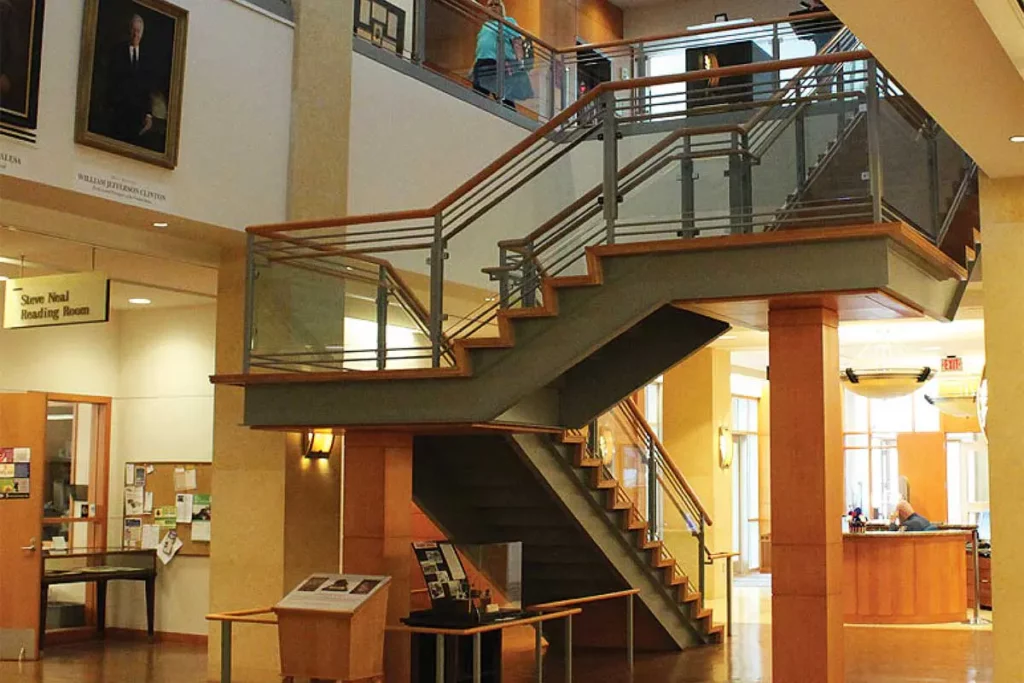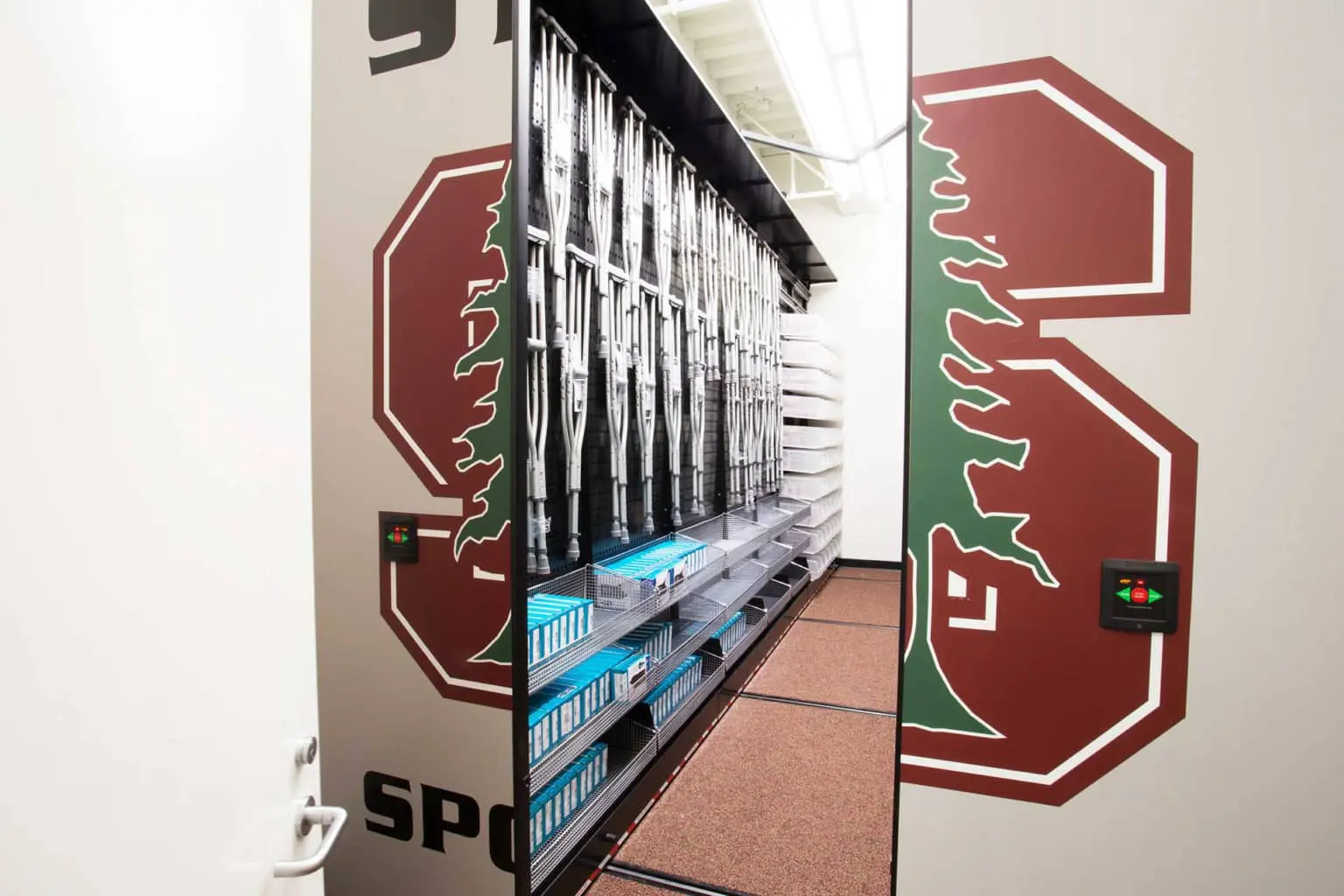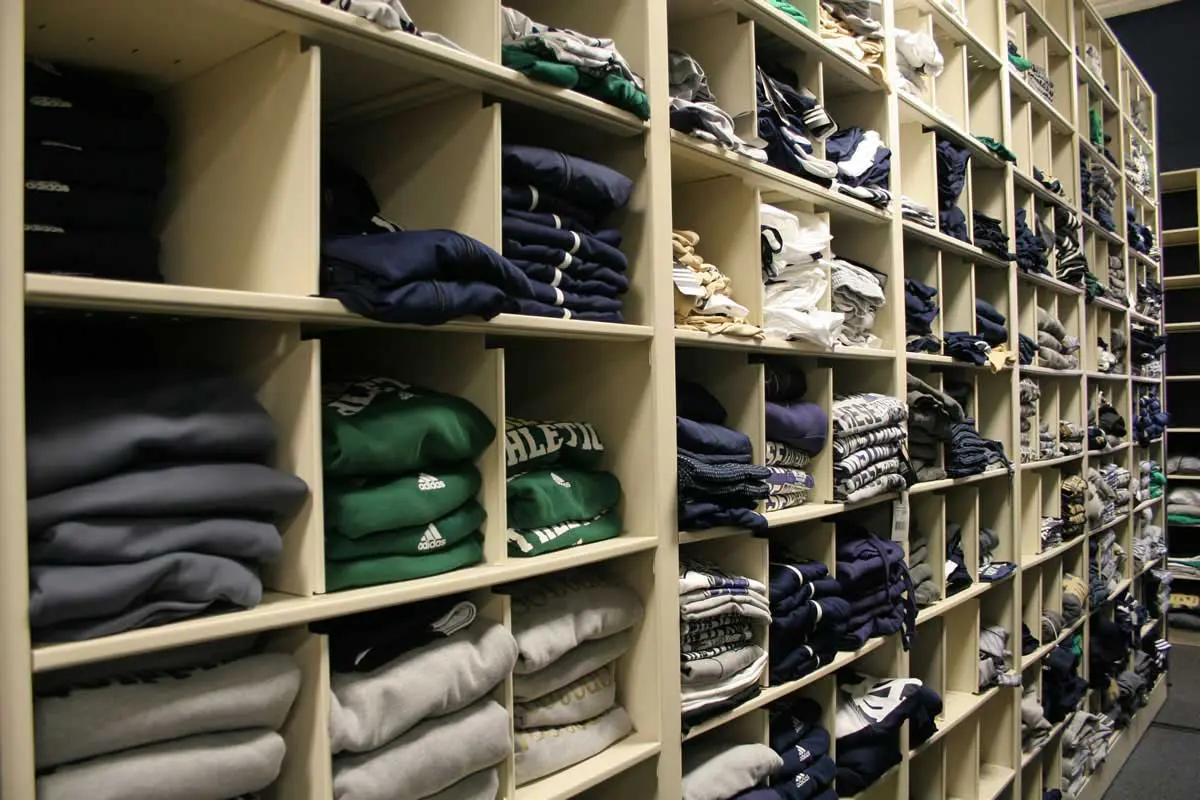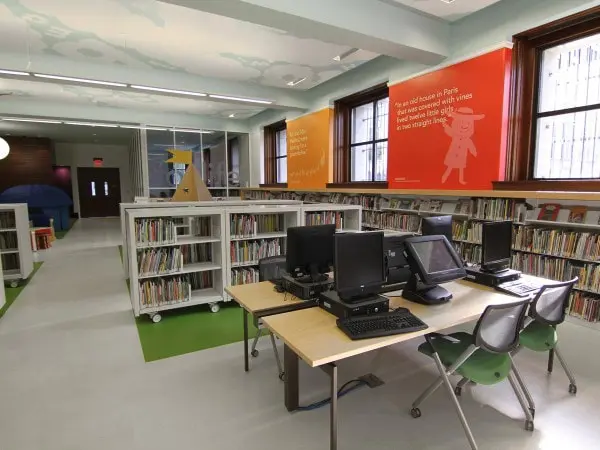
Libraries are a valuable resource and a hub of knowledge, but maximizing space within these institutions can often be a challenge. In this blog, we will explore innovative strategies and design concepts that can help libraries optimize their space and create an inviting environment for patrons. From utilizing convertible and multipurpose furniture to implementing floor-to-ceiling storage solutions, we will provide practical tips to make the most of your library space. So, let’s dive in and discover how you can transform your library into a functional and efficient space that encourages learning and exploration.
Strategy 1: Utilize Convertible and Multipurpose Furniture
To maximize library space, one clever strategy is to incorporate convertible and multipurpose furniture. This type of furniture offers multi-functional utility, allowing it to serve different purposes based on the library’s needs. Convertible tables, for example, can transform from a small gathering table to a large work surface, accommodating group work sessions or individual study spaces. Likewise, shelves with adjustable configurations can adapt to changing storage requirements. By utilizing convertible and multipurpose furniture, libraries can make efficient use of space without compromising functionality.
Convertible tables and shelves bring numerous benefits to libraries. These versatile pieces of furniture provide adaptable storage solutions, ensuring compatibility with a wide range of activities and layouts. Convertible tables, with their adjustable height and size, can accommodate various needs, whether it’s creating a home office space or a dining table for group work. Similarly, shelves with adjustable configurations allow libraries to customize storage solutions to fit unique collection sizes and types. With their functionality and versatility, convertible tables and shelves offer practical solutions for maximizing space in libraries.
Examples of Effective Multipurpose Furniture in Libraries
- ETO (Engineered-to-Order) storage solutions: Custom-designed shelving systems that optimize space by utilizing vertical storage, maximizing floor space.
- Customizable workstations with built-in storage: Multipurpose workstations that provide comfortable seating, work surface, and storage in one unit.
- Space-saving seating arrangements: Convertible chairs or ottomans with hidden storage compartments for books and belongings.
- Rolling bookcases or storage bins: Mobile storage units that can be moved and rearranged to accommodate different activities and group work.
- Shelving with modular design: Configurable shelving systems that can be adapted to fit various storage needs, allowing for efficient space utilization.
Strategy 2: Implement Floor-to-Ceiling Storage Solutions
Another effective strategy for maximizing library space is by implementing floor-to-ceiling storage solutions. Libraries often have limited floor space, making vertical storage crucial for optimizing storage capacity. High-density shelving systems are specifically designed for libraries, offering a compact and efficient storage solution. By utilizing the full height of rooms, libraries can significantly increase their storage capacity while minimizing the footprint of shelving units. Implementing floor-to-ceiling storage solutions allows libraries to make the most of their available space, creating organized and accessible storage areas for their collections.
Vertical storage spaces provide several advantages for libraries. By utilizing the vertical space, libraries can maximize their floor space, creating more room for additional seating, study areas, or collaborative workspaces. Vertical storage solutions, such as tall bookcases or shelving units, allow libraries to organize their collections without sacrificing valuable floor space. These storage solutions are especially beneficial for libraries with limited square footage, allowing them to optimize their space while maintaining accessibility to their resources. By effectively utilizing vertical space, libraries can ensure efficient storage and create a welcoming environment for patrons.
Practical Examples of Floor-to-Ceiling Storage in Libraries
- Compact shelving systems: Using shelving units that can be compressed together, creating space-saving solutions without compromising storage capacity.
- Mezzanine levels: Adding elevated platforms or suspended mezzanine floors to increase vertical storage space and accommodate additional shelving.
- Efficient use of wall space: Installing bookcases, shelving, or hanging storage solutions along walls to maximize storage opportunities.
- Incorporating ladder bookcases or rolling bookcases: Utilizing portable shelving units that can be moved around to access storage areas in libraries with high ceilings.
Strategy 3: Make Use of Hidden and Dead Spaces
Hidden and dead spaces often go unnoticed in libraries, but they can provide valuable storage opportunities. By identifying and repurposing these overlooked areas, libraries can maximize their storage capacity and create functional spaces. Nooks, corners, and alcoves that are often left vacant can be transformed into cozy reading corners or small storage areas. Libraries can also explore creative ways to utilize dead spaces, such as converting unused nooks into study alcoves or integrating shelving into unused corners. Making use of hidden and dead spaces can significantly contribute to space optimization in libraries.
Identifying hidden spaces within your library is the first step in maximizing your storage capacity. Take a closer look at corners, nooks, and underutilized areas that may be going unnoticed. These areas can be transformed into functional storage solutions, providing additional space for books, shelving, or seating. Consider utilizing unused nooks for small workstations, study areas, or display shelves. By actively evaluating your library’s space and thinking creatively, you can identify hidden spaces that can be repurposed to optimize storage solutions and improve the overall functionality of the library.
Dead spaces, such as unutilized corners or small areas between bookshelves, offer unique opportunities for storage solutions. With some creativity and interior design ingenuity, these forgotten spaces can be transformed into practical storage areas. Consider installing floor-to-ceiling shelving in unused corners to house books or display decorative items. Use narrow bookcases or shelves to make use of smaller, awkward spaces between existing furniture. By repurposing dead spaces, libraries can optimize their storage capacity, create a visually appealing interior, and make every inch of the available space count.
Strategy 4: Utilize Customized Shelves with Varying Depths
Customizable shelves with varying depths offer a practical solution for libraries with unique storage needs. Traditional shelving units may not always accommodate books, media, or other library materials of different sizes and shapes. Customizable shelves, on the other hand, provide flexibility, allowing libraries to optimize storage space by adjusting shelf sizes based on the items being stored. This tailored approach ensures that no space is wasted and that the shelving unit can accommodate the library’s specific collection requirements.
Customizable shelf designs offer libraries the flexibility to adapt shelving units to their unique needs. Libraries can take advantage of various shelving options, such as adjustable shelving that caters to different book sizes, media types, or storage needs. Customizable layouts allow libraries to optimize space, making the most efficient use of available shelving units. Additionally, these designs provide an opportunity to incorporate decorative elements, enhancing the overall aesthetic appeal of the library. With customizable shelves, libraries can create storage solutions that not only meet practical needs but also contribute to the decor and atmosphere of the space.
Implementing shelves with varying depths in your library requires careful planning and consideration. Here are some practical steps to help you make the most of this storage solution:
- Assess your library’s needs: Determine the types of items that require storage and their varying sizes.
- Plan shelving layouts: Create a shelving plan that incorporates varying depths to accommodate different items and utilize space effectively.
- Adjust shelving configurations: Customize shelving unit layouts by adjusting shelf heights or incorporating modular shelving designs.
- Group items strategically: Organize items based on usage frequency and accessibility, placing frequently accessed materials within easy reach.
- Evaluate regularly: Regularly review your shelving arrangements and make adjustments as needed to ensure optimal space usage.
Strategy 5: Incorporate Dual-Function Coffee Tables
Dual-function coffee tables provide an innovative solution for maximizing space in libraries. These versatile pieces of furniture serve multiple purposes, combining storage functionality with a traditional coffee table design. Coffee tables with built-in storage compartments can house books, magazines, or other items, reducing clutter and providing additional space for patrons to work or relax. Some coffee tables even feature flip-top surfaces that can transform into desks, making them ideal for remote work or study sessions. By incorporating dual-function coffee tables, libraries can optimize space without sacrificing comfort or practicality.
Coffee tables with storage offer libraries versatility and functionality. With built-in storage space, these tables provide a convenient solution for storing books, magazines, or even small electronic devices. Some coffee tables feature ottoman-like designs, with padded tops that can be lifted to reveal hidden storage compartments. These ottoman-style coffee tables not only provide practical storage solutions but also offer additional seating options for patrons. By selecting the right coffee table with storage, libraries can maximize space, enhance functionality, and create cozy reading nooks or collaborative work areas.
When selecting a coffee table for your library, consider the following factors:
- Accessibility: Choose a coffee table that offers easy access to storage compartments, making it convenient for patrons to retrieve items without much effort.
- Storage space: Assess the storage capacity of the table, ensuring it meets the library’s specific needs and storage requirements.
- Decorative elements: Consider how the coffee table will complement the overall decor and aesthetics of the library, selecting a design that adds visual interest and enhances the space.
- Size and layout: Take into account the available space in your library and choose a coffee table that fits harmoniously within the existing furniture arrangement, maximizing functionality and flow.
Strategy 6: Avoid Clutter and Maintain Organized Space
When it comes to maximizing library space, avoiding clutter and maintaining an organized environment is crucial. Here are some essential tips to help you achieve this:
- Regular weeding and decluttering: Remove outdated or damaged materials to free up storage space.
- Utilize storage bins and containers: Group similar items in storage bins to keep shelves organized and minimize clutter.
- Designate specific workspaces: Create designated areas for different activities, such as reading, group work, or computer use, ensuring materials are returned to their designated spaces after use.
- Implement a labeling system: Clearly label shelves, bins, and storage areas to facilitate easy organization and retrieval of materials.
- Regular maintenance and cleaning: Establish cleaning routines to keep shelves, tables, and storage areas tidy, contributing to a well-organized environment.
Regular maintenance and decluttering are essential for keeping library space organized and functional. Here’s why they matter:
- Maintaining a clutter-free environment enables patrons to easily find and access materials, enhancing their overall experience.
- Regular decluttering helps identify items that are no longer relevant or in use, allowing libraries to free up valuable storage space.
- Scheduled maintenance ensures shelving units, furniture, and storage areas are in good condition, minimizing the risk of damage or accidents.
- By establishing a routine for cleaning and decluttering, libraries can maintain an inviting atmosphere and create a positive space for patrons to explore, study, and enjoy library resources.
- Regular maintenance and decluttering are essential practices that contribute to an organized library, benefiting both library staff and patrons.
The Importance of a Well-Organized Library
Here’s why it matters:
- Easy navigation: A well-organized library allows patrons to navigate through the space effortlessly, locating resources efficiently.
- Enhanced accessibility: Proper organization ensures items are easily accessible, enabling patrons to find what they need quickly and without frustration.
- Efficient functionality: An organized library facilitates efficient workflows, allowing library staff to provide better assistance to patrons and perform their duties effectively.
- Visual appeal: A clean and clutter-free library creates a visually appealing atmosphere, encouraging patrons to explore and engage with the space and resources.
- Positive user experience: A well-organized library ultimately contributes to an overall positive user experience, encouraging patrons to return and utilize library services.
The Concept of Space Maximization in Libraries
Efficient space management is crucial in libraries to ensure the smooth operation of day-to-day activities. Space optimization involves utilizing every inch of available space to its full potential, allowing for efficient storage solutions and improved patron experiences. By adopting innovative design techniques and customized layouts, libraries can effectively maximize their space, creating a harmonious balance between functionality and aesthetics. Let’s delve deeper into the need for space optimization and the role of innovative design in achieving it.
To meet the ever-increasing demands of storage, libraries must invest in space optimization strategies. Efficient storage solutions not only allow libraries to accommodate a larger collection of books, but they also enhance the overall functionality of the space. High-density shelving systems, designed specifically for libraries, offer an ideal solution for maximizing floor space while providing ample storage capacity. Additionally, libraries can benefit from engineered-to-order (ETO) storage solutions, which are tailored to their unique needs. By employing efficient space management techniques, libraries can improve patron experiences, making it easier for them to navigate through the library and find the resources they need.
Innovative design plays a crucial role in effective space management within libraries. By incorporating unique design elements and customizable layouts, libraries can optimize their space while creating visually appealing environments. Creative storage solutions, such as shelving with varying depths, not only provide functionality but also add a decorative touch to the library. Customizable shelf designs adapt to the library’s unique needs, allowing for efficient use of space and easy organization of materials. These innovative design concepts combine practicality with aesthetics, creating a visually stunning and highly functional library space.
Frequently Asked Questions
Efficient space management is the key to maximizing your library space. By adopting strategies such as utilizing high-density shelving, incorporating convertible and multipurpose furniture, implementing floor-to-ceiling storage, utilizing hidden and dead spaces, deploying customizable shelves, and incorporating dual-function coffee tables, you can optimize space while maintaining functionality and aesthetics. Tailoring solutions to fit unique needs, such as using ETO storage, customizable layouts, and vertical storage, can provide ideal space optimization solutions. Remember, regular maintenance, decluttering, and a well-organized layout further contribute to efficient space management, enhancing the overall user experience. Consider these strategies to transform your library space into an ideal solution for storage, collaboration, learning, and exploration.
- Utilize floating shelves to maximize vertical space, making efficient use of limited floor space.
- Implement color-coded labels or stickers for different genres or categories, enabling easy book sorting and retrieval.
- Embrace digital catalog systems, such as online databases, to facilitate quick book searches and eliminate the need for physical space-consuming bookshelves.
- Utilize underutilized spaces like the back of doors or corners by installing small bookshelves for storage.
- Use modular furniture that can be easily rearranged to accommodate different activities and group work sessions.
- Utilize vertical space by incorporating tall bookshelves or storage units.
- Create designated zones for different purposes, such as reading areas, study spaces, and collaborative workspaces, ensuring an efficient use of space.
- Consider using mobile shelving units that can be moved around to create flexible storage solutions, depending on the library’s needs and activities.
- Compact shelving systems that can be compressed together, creating space-saving solutions without compromising storage capacity.
- Utilize vertical space by installing higher bookshelves or mezzanine levels for additional storage opportunities.
- Transition from physical resources to digital resources, such as e-books and online databases, to reduce the need for physical shelf space.
- Incorporate rolling carts or book trucks that can easily move and store books when not in use, maximizing floor space.
Yes, there are design elements that can help create the illusion of more space in a library. One effective technique is to use mirrors strategically placed throughout the space. Mirrors reflect light and give the impression of a larger area. Additionally, using light colors for the walls and furniture can make the room feel more open and spacious. Installing large windows or skylights will not only bring in natural light but also create an airy atmosphere. Lastly, utilizing glass or transparent partitions can visually expand the space by allowing sightlines to extend beyond physical barriers.



